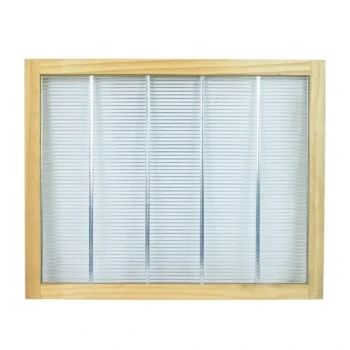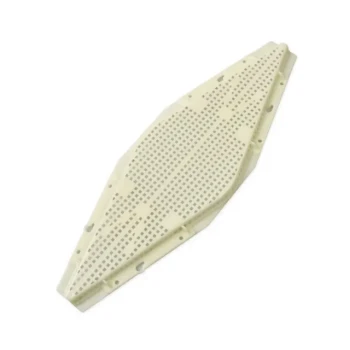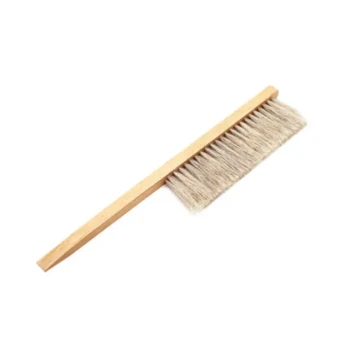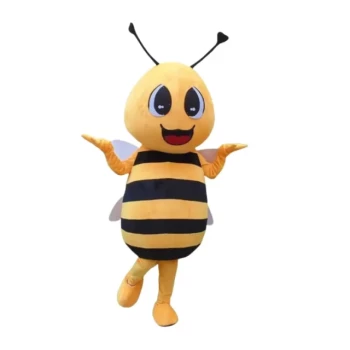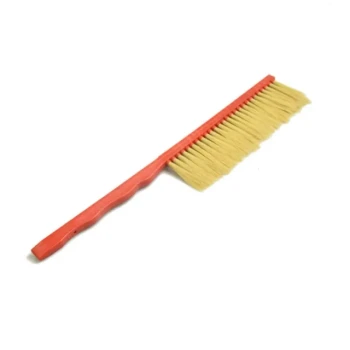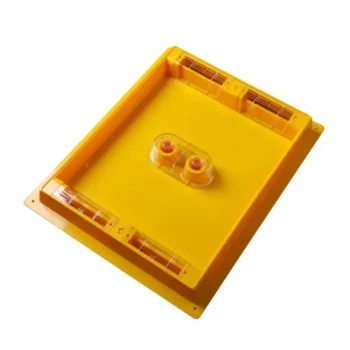In short, if you do not use a queen excluder, the queen bee is free to travel into your honey supers and lay eggs. This results in a mix of honey and brood (bee larvae and pupae) in the same frames, complicating your honey harvest and changing the overall dynamics of your hive management.
The decision to use a queen excluder is a fundamental choice between two beekeeping philosophies. Going without one creates a more natural hive environment but demands more diligent management, while using one prioritizes harvesting efficiency and hive organization.
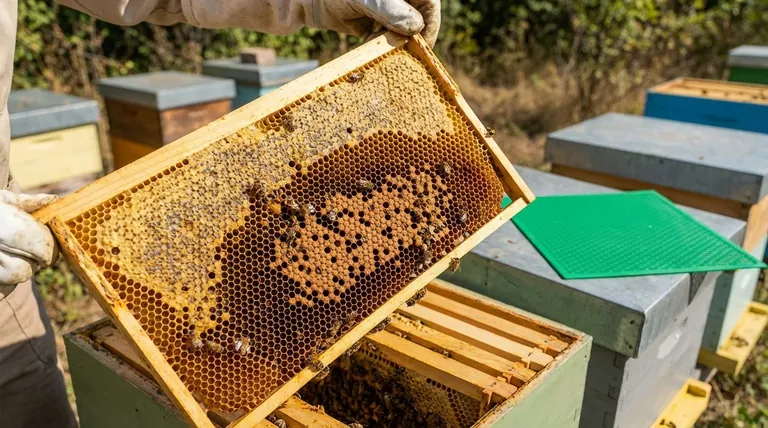
The Core Consequence: Brood in Your Honey Supers
Not using an excluder removes the physical barrier between the brood chamber and the honey storage area. This has direct and predictable consequences for your hive.
Why the Queen Moves Up
A queen's primary instinct is to lay eggs. If the lower brood box becomes crowded or filled with honey and pollen (a condition known as being "honey-bound"), she will seek empty cells elsewhere, including in the frames you designated for honey.
The Impact on Honey Harvesting
When you harvest honey from frames containing brood, you cannot simply extract it using a centrifugal spinner, as this would destroy the developing bees. You must carefully inspect each frame, which significantly slows down the process.
The Specifics of Drone Brood
Drone cells are larger than worker cells and are a similar size to honey storage cells. The queen may preferentially lay unfertilized eggs (which become drones) in honey supers, especially in foundationless frames or plastic frames like Flow Frames.
The Case for 'Excluder-Free' Beekeeping
Many beekeepers choose to forgo excluders, believing the benefits of a more natural hive outweigh the inconveniences.
A More Natural Hive Structure
In a wild nest, bees do not create a hard separation between brood and honey. They typically store honey above and to the sides of the brood nest, and this boundary shifts naturally. Forgoing an excluder mimics this organic state.
Avoiding Physical Harm to Bees
Excluders can pose physical risks. The sharp edges can fray and damage worker bees' wings over time as they pass through thousands of times. Larger male bees (drones) are often too big to fit and can get stuck and die.
A Strategy for Managing the Queen
You can influence where the queen lays without an excluder. By placing an empty, foundationless frame in the brood chamber, you provide a designated, attractive space for the queen to lay her drone brood, reducing the likelihood she will seek it in the honey supers.
Understanding the Trade-offs: Why Excluders Are the Standard
While going excluder-free has its merits, the widespread use of excluders in both commercial and hobbyist beekeeping is based on clear, practical advantages.
Unmatched Harvesting Efficiency
The primary benefit of an excluder is that it guarantees your honey supers are brood-free. This allows you to remove entire boxes conceitos for extraction without inspecting each frame, saving immense time and labor.
Simplified Hive Management
Knowing the queen is confined to the brood box makes inspections far easier. You can quickly find her to assess her health or for re-queening without searching through the entire hive.
Cleaner Honey and Better Wax
Frames used for brood rearing accumulate more pollen and waste, which can lead to darker honey. Brood-free honey frames produce cleaner, lighter honey and higher-quality wax cappings for recovery.
The Risk of a Honey-Bound Queen
A key pitfall of using an excluder is the risk of the queen running out of laying space if the brood box fills with nectar. This can restrict colony growth and trigger swarming. A beekeeper using an excluder must actively manage the brood box to ensure the queen always has room to lay.
How to Apply This to Your Apiary
Your choice depends entirely on your goals, management style, and beekeeping philosophy. There is no single "right" answer.
- If your primary focus is natural beekeeping: Forgoing an excluder aligns with your philosophy, but be prepared for more hands-on management and careful inspections during harvest.
- If your primary focus is harvesting efficiency: An excluder is the most effective tool for ensuring a fast, simple, and clean honey extraction process.
- If you are a new beekeeper seeking simplicity: Starting with an excluder can make hive inspections and your first harvests much less intimidating by keeping the hive zones clearly separated.
Ultimately, the decision hinges on balancing your operational goals with the natural behavior of your colony.
Summary Table:
| Consequence | Impact on Beekeeping |
|---|---|
| Brood in Honey Supers | Complicates honey extraction; frames cannot be spun in an extractor. |
| More Natural Hive | Mimics wild colony structure but requires more diligent management. |
| Risk of Drone Brood | Queen may lay in honey cells, especially in foundationless or Flow Frames. |
| Simplified Harvest (with excluder) | Ensures brood-free honey supers for efficient, clean extraction. |
Optimize Your Apiary's Efficiency with HONESTBEE
Whether you manage a single hive or a large commercial apiary, the right equipment is crucial for balancing natural beekeeping with operational efficiency. HONESTBEE supplies durable, beekeeper-tested queen excluders and a full range of beekeeping supplies and equipment through our wholesale-focused operations.
We help commercial apiaries and beekeeping equipment distributors maximize honey production and simplify hive management. Let us provide the reliable tools you need for a successful season.
Contact HONESTBEE today to discuss your apiary's needs and explore our wholesale catalog.
Visual Guide
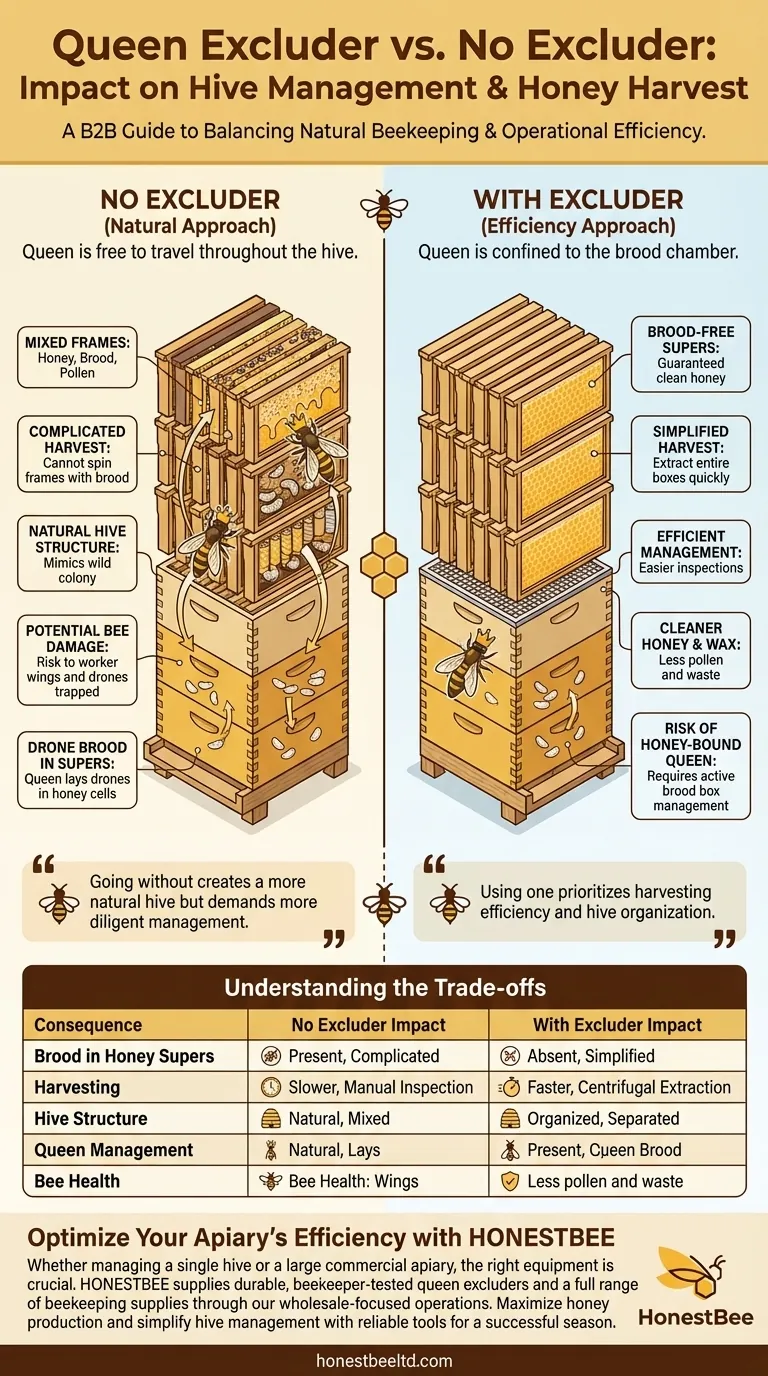
Related Products
- High Performance Plastic Queen Excluder for Beekeeping and Apiary Management
- Professional Plastic Queen Excluder for Modern Beekeeping
- Premium Wood Framed Metal Wire Queen Bee Excluder
- Plastic Queen Bee Excluder for Bee Hive Wholesale
- Wooden Queen Bee Excluder for Beekeeping
People Also Ask
- When is the typical time frame for harvesting honey and removing the queen excluder? Optimize Your Hive Management
- What are the benefits of a queen excluder? Ensure Pure Honey & Simplify Hive Management
- How does a queen excluder affect honey storage? Maximize Clean Honey Yields in Your Hive
- What impact does a queen excluder have on colony defensiveness? Control Hive Temperament for Safer Beekeeping
- When should I remove my queen excluder? Timing is Critical for Winter Bee Survival


